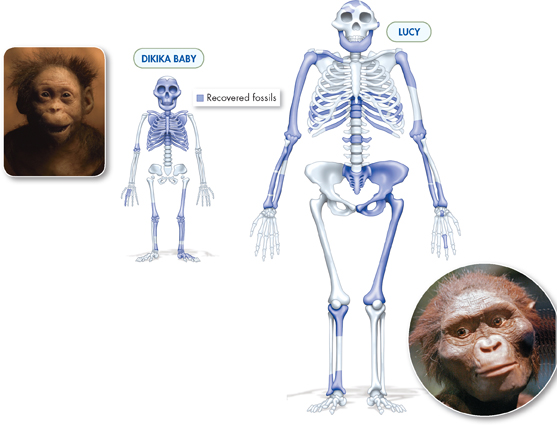
FIGURE 26–18 Lucy and the Dikika Baby “Lucy” and “the Dikika Baby” are nicknames of two very important fossils of the hominine A. afarensis. Lucy is a partial skeleton of an adult female. The Dikika Baby is the most-complete fossil yet found of this species. These two fossils were discovered just 6 miles apart in Ethiopia. Interpret Visuals Given the fossils recovered, which face shape would you expect scientists to be more confident about—the Dikika Baby's or Lucy's?
▸ Lucy The best-known A. afarensis specimen is a remarkably complete skeleton of a female discovered in 1974, nicknamed “Lucy.” Lucy stood about 1 meter tall and lived about 3.2 million years ago.
▸ The Dikika Baby In 2006, an Ethiopian researcher announced the discovery of some incredibly well preserved 3.3 million-year-old fossils of a very young female hominine. The skeleton included a nearly complete skull and jaws, torso, spinal column, limbs, and left foot. This fossil was assigned to A. afarensis, the same species as Lucy, and nicknamed “the Dikika Baby,” after the region in Africa where it was discovered. Leg bones confirmed that the Dikika Baby walked bipedally, while her arm and shoulder bones suggest that she would have been a better climber than modern humans. Researchers will be extracting information from these bones for years.
Paranthropus Three more-recent species, which grew to the size of well-fed football linebackers, have been placed in their own genus, Paranthropus. These Paranthropus species had huge, grinding back teeth. Their diets probably included coarse and fibrous plant foods like those eaten by modern gorillas. Paleontologists now place Paranthropus on a separate, dead-end branch of our family tree.
Hominine Relationships Researchers once thought that human evolution took place in relatively simple steps in which hominine species, over time, became gradually more humanlike. But it is now clear that a series of hominine adaptive radiations produced a number of species whose relationships are difficult to determine. As a result, what once looked like a simple hominine “family tree” with a single main trunk now looks more like a shrub with multiple trunks.
Table of Contents
- Formulas and Equations
- Applying Formulas and Equations
- Mean, Median, and Mode
- Estimation
- Using Measurements in Calculations
- Effects of Measurement Errors
- Accuracy
- Precision
- Comparing Accuracy and Precision
- Significant Figures
- Calculating With Significant Figures
- Scientific Notation
- Calculating With Scientific Notation
- Dimensional Analysis
- Applying Dimensional Analysis




